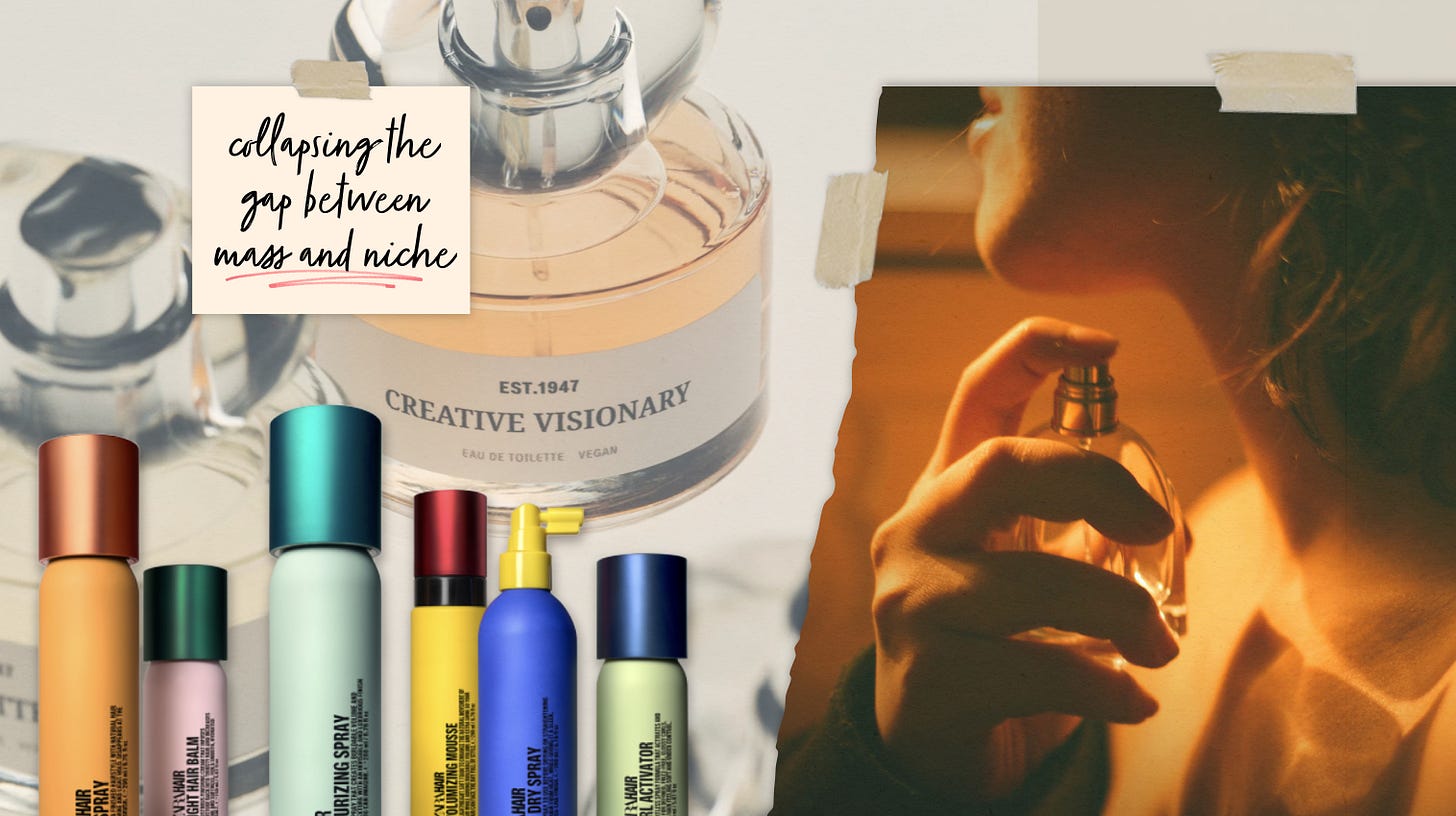Smart, Stylish, Store-Brand: The Reinvention of Beauty
Private-label beauty is rewriting the rules of mass, prestige, and everything in between!
Just as grocers have turned private labels into cult favorites — think Trader Joe’s seasonal drops or Whole Foods 365’s halo of “better-for-you” credibility, fashion retailers are now making a similar play in fragrance and beauty. The strategy is no longer about filling shelves with cheaper alternatives. Instead, private-label beauty has evolved into a design-led, loyalty-building engine that stands as a credible alternative to prestige brands, while creating new reasons for consumers to shop across categories.
Consider Zara. With Zara Emotions by Jo Malone CBE, the retailer redefined what mass fragrance could look and feel like — swapping cartoonish celebrity scents for heavyweight glass and minimalist typography that nodded to niche perfumery. Now, with Zara Hair, it’s extending that same design-led ambition into beauty. Created with legendary stylist Guido Palau and French perfumer Jérôme Epinette (behind cult hits like Byredo’s Gypsy Water and Atelier Cologne’s Orange Sanguine), the line of shampoos, conditioners, and masks is simple yet inclusive, pairing bold, graphic packaging with an elevated scent signature. Built with intention rather than as a side project, it signals Zara’s drive to create a comprehensive beauty ecosystem — premium in feel, yet still accessible in price.
H&M Beauty has also taken cues from prestige fragrance. Its collection comes in squared, architectural bottles, color-coded by scent family—a visual system that resembles Armani Privé more closely than mass retail. From there, the competitive set expands:
Target, meanwhile, has turned its Fine’ry fragrance line into a TikTok phenomenon. Apothecary-style bottles, tinted juice, and bold minimal type are instantly Instagrammable. While the price point keeps them accessible enough for haul culture, the result is products that sell out like hotcakes, or in this case, like sneaker drops.
Quince is another standout. Best known for its “luxury for less” apparel, the brand is rapidly expanding its multi-category private-label universe. Its fragrances—ahem—very Byredo-inspired — now sit alongside prestige names like Augustinus Bader and Le Prunier, positioning Quince’s own creations as equals to high-end players. However, the real engine here is loyalty: beauty shoppers can earn up to 35% back in-store credit on purchases, creating a flywheel effect where beauty becomes the gateway into Quince’s broader lifestyle ecosystem.
Even brands once known purely for basics are entering the fray. Gap and Old Navy are rolling out beauty as part of their comeback playbooks. Old Navy’s proposed lineup includes fragranced body mists and buzzy third-party brands like TonyMoly and e.l.f., targeting Gen Alpha and younger Gen Z consumers who are voracious beauty buyers. These shoppers have already turned affordable products like Starface pimple patches, Touchland sanitizers, and even Aquaphor into viral icons — and Old Navy is betting that its stores can become a physical stage for that same impulse-driven beauty culture. The challenge, of course, is that they’ll be competing with Ulta, Sephora, and even TikTok Shop, often in the very same malls.
Why It Matters: Private-label fragrance and beauty is no longer a “cheap knockoff” business. With aesthetic innovation, credible collaborations, and loyalty mechanics baked in, these lines are collapsing the gap between mass and niche. For consumers, they deliver the thrill of discovery, the credibility of design, and the satisfaction of “shopping smart.” For retailers, they’re a way to build stickier ecosystems, attract younger cohorts, and future-proof against the dominance of multi-brand beauty giants. By editing for consumers, in some cases (like Quince), retailers become the go-to authorities by combining the best of high and low. The competitive lines between mass and prestige are blurring, and private-label beauty is leading the charge.




